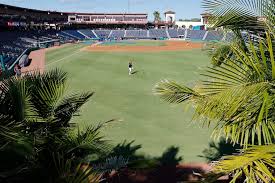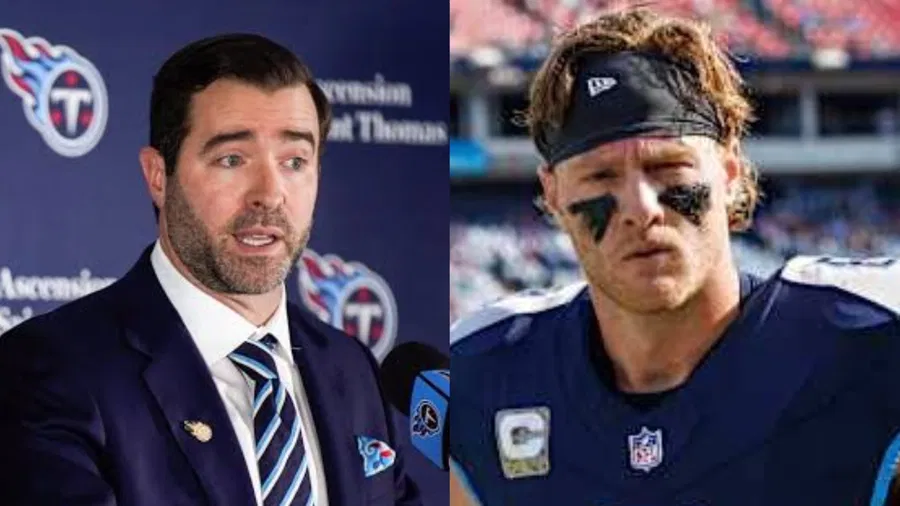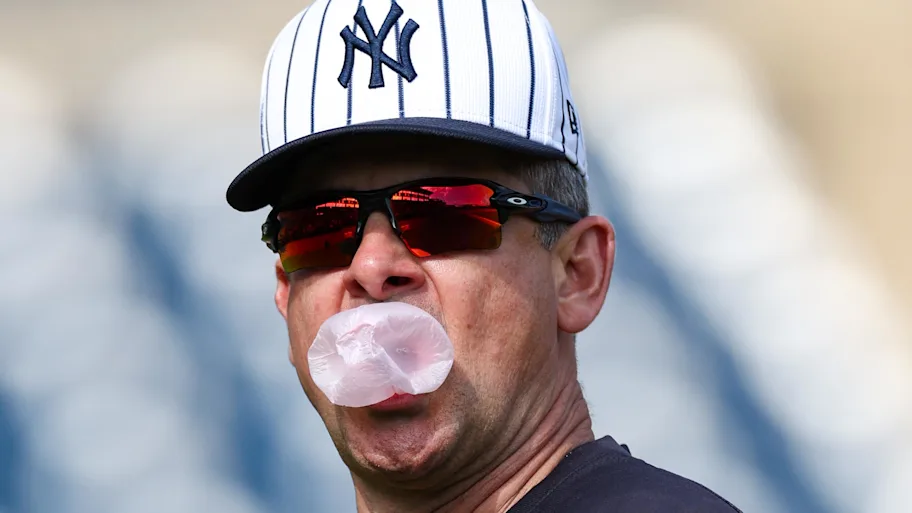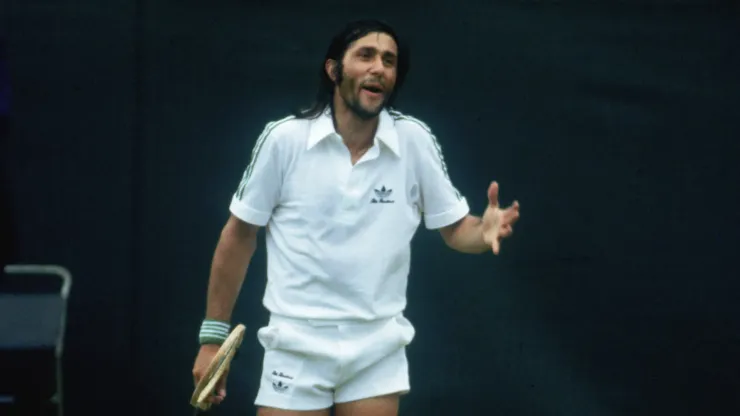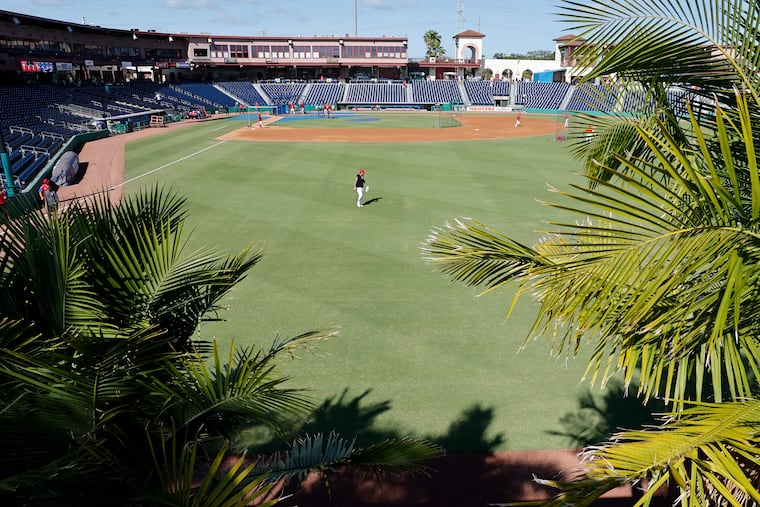
days ago, the Phillies loaded up an equipment truck with, among other things, 2,400 baseballs and 1,200 bats for the 1,060-mile drive to Clearwater, Fla.
Here’s something they didn’t need: a program.
Because, for a third season in a row, the cast of characters largely is unchanged. The Phillies will take another shot at the World Series with the same core that has characterized much of the Bryce Harper era.
And, once again, expectations are as high as ever for Harper, Trea Turner, Zack Wheeler, Aaron Nola, J.T. Realmuto, Kyle Schwarber, Nick Castellanos, and the rest of Rob Thomson’s team. We will have six weeks in Florida to discuss all that. For now, a spring-training primer:
They aren’t quite running it back, but it’s not as if Dave Dombrowski took a blender to the roster, either.
In fairness, the Phillies entered the offseason with $220.5 million in salary commitments to 11 players and nearly $14 million earmarked for raises to seven arbitration-eligible players. They will open spring training with the second-highest luxury-tax payroll in baseball ($306.2 million), hiking their tax penalty to 110% on every dollar spent over $301 million.
The Phillies tried to shake things up with a trade but could not agree on fair value for Alec Bohm, Ranger Suárez, and others. They did swing a pre-Christmas deal with the Marlins for lefty starter Jesús Luzardo, whom they will control for two seasons, for two minor leaguers, including teen shortstop Starlyn Caba.
Otherwise, one-year contracts were the theme of the winter. The Phillies signed three free agents: reliever Jordan Romano, outfielder Max Kepler, and swingman Joe Ross for 2025 to replace Jeff Hoffman, Austin Hays, and Spencer Turnbull, respectively. Hoffman signed with the Blue Jays, Hays with the Reds; Turnbull remains a free agent.
The Phillies also lost closer Carlos Estévez, whom they acquired from the Angels last July for two pitching prospects. Estévez signed a two-year, $22 million contract with the Royals.
Scott Lauber: Kepler, if only because he’s the only new position player. He’s also shifting from right field to left, which doesn’t sound like a big deal but is notable because he has played only right and center in 10 years in the majors. He hit only eight homers and slugged .380 with a .682 OPS last year in Minnesota but also played through an abdominal injury that sapped some of his power.
Lochlahn March: The Phillies’ three main acquisitions — Kepler, Romano, and Luzardo — are looking to rebound from injury-marred seasons. If Luzardo can reclaim his 2023 form (and his fastball velocity) after missing most of last year with a stress reaction in his lower back, the Phillies have the potential to have the strongest rotation in baseball. Two seasons ago, Luzardo posted 208 strikeouts and a 3.58 ERA across 178⅔ innings with the Marlins and was their Game 1 starter in the wild-card series against the Phillies.
Riding high from their playoff upset of the Phillies and march to the NLCS, the Mets signed Soto to a 15-year, $765 million contract that shook the sport for its sheer value. The outcome hardly was a surprise, though. Steve Cohen wasn’t going to be outbid, especially by the Yankees, for a generational 26-year-old hitter he badly wanted.
Otherwise, the Mets stuck to their disciplined strategy of short-term deals for starting pitching (Sean Manaea, Frankie Montas, and converted reliever Clay Holmes) and appear to be willing to walk away from Pete Alonso.
Lauber: If not for the $36 million that they owe Taijuan Walker over the next two years, the Phillies would’ve had more flexibility to address, say, the bullpen. Or left field. Instead, Walker is the highest-paid No. 6 (or 7, if you count Andrew Painter) starter in baseball. Does he fit in the bullpen as a mop-up man? Better question: How much of the $36 million would the Phillies have to pay to trade him?
March: Even though the Phillies don’t plan for Painter to appear in Grapefruit League action this year, that won’t dampen the attention he’ll get when he walks into big league camp for the first time since 2023. Dombrowski has said the Phillies intend to save Painter’s big league innings until “July-ish,” but what exactly is the plan until then? How is Painter looking and feeling, coming off his first real game action in over a year in the Arizona Fall League?
Lauber: When backup catcher is the most-contested spot, the roster largely is set in stone. Garrett Stubbs, the incumbent, is popular in the clubhouse. Rafael Marchán, the challenger, has greater upside but a checkered injury history. Unlike Stubbs, Marchán can’t be sent to the minors without being exposed to waivers, which likely gives him the edge.
March: Another battle is shaping up for the eighth reliever spot. The jobs already spoken for likely belong to José Alvarado, Matt Strahm, Orion Kerkering, Tanner Banks, José Ruiz, Jordan Romano, and Joe Ross, if all remain healthy. Depending on how Walker looks in camp, he could take the last slot, but he will have some competition from others on the 40-man roster.
And another name might emerge from the host of nonroster invitees, such as 31-year-old Japanese pitcher Koyo Aoyagi. If he breaks camp, the righty would be the first Japanese player on the Phillies since 2008, marking some progress in the organization’s efforts to break through in that country.
Lauber: Justin Crawford. Some talent evaluators are split on how good he will be because of his extreme ground-ball rate, but everyone seems to agree that he’s developing as a hitter. Still, it’s difficult not to notice the Phillies’ revolving door in center field. Crawford won’t win the job out of camp, but Dombrowski isn’t afraid to push a high-level prospect to the majors (see: Andrew Benintendi and Rafael Devers with the Red Sox). A good spring could accelerate the timeline.
March: Moisés Chace. The Phillies acquired the right-hander from the Orioles at the 2024 deadline for Gregory Soto, and the 21-year-old has since pitched his way onto the Phillies’ 40-man roster. Chace’s fastball is intriguing, with an unusual approach angle that misses a lot of bats. The Phillies have given Chace the chance to be a starter, and he is coming off a career-high 80⅓ innings between high-A and double A. It will be interesting to see where Year 2 in the organization takes him.
